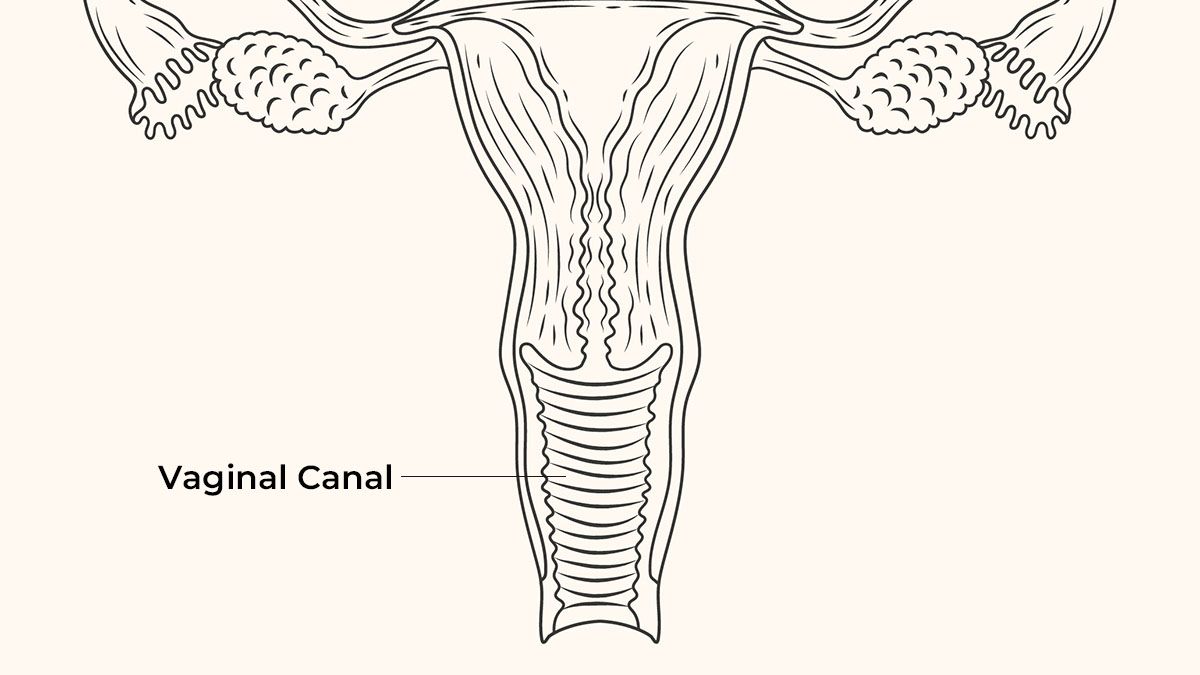
The Vaginal Canal Anatomy
Understanding one of the body’s most dynamic and vital structures.
In Brief
The vaginal canal is a muscular, flexible passage connecting the external genitals to the cervix and uterus. It plays roles in reproduction, menstruation, and sexual pleasure. Its environment constantly adapts—balancing pH, protecting against infection, and supporting a healthy microbiome.
The Structure and Function of the Vaginal Canal
The vaginal canal, often simply called the vagina, is a muscular, tubular organ that extends from the vulva to the cervix—the lower part of the uterus. On average, it measures between 7 to 10 centimeters (3 to 4 inches) in length, but this can vary widely among individuals and change with arousal, childbirth, or hormonal cycles.
“The vaginal canal is not a static passage—it’s a responsive, living tissue that adapts throughout a woman’s life.”
Layers of the Vaginal Wall
- Mucosal layer (inner layer): Rich in folds called rugae, this layer allows expansion and maintains moisture. Research shows that the mucosal surface supports beneficial bacteria—mainly Lactobacillus—which help preserve a slightly acidic pH (around 3.8 to 4.5).
- Muscular layer (middle layer): Consists of smooth muscle fibers arranged in circular and longitudinal patterns. Scientists have found that these muscles contribute to flexibility and tone, assisting during childbirth and enhancing sexual function.
- Adventitial layer (outer layer): A connective tissue layer that anchors the vagina to surrounding organs like the bladder and rectum.
A Dynamic, Self-Maintaining Environment
The vaginal canal maintains its health through a self-regulating ecosystem. Studies suggest that the vaginal microbiome—dominated by beneficial bacteria—protects against harmful pathogens. Hormonal fluctuations influence this environment; for instance, estrogen increases glycogen in the vaginal cells, which supports the growth of protective Lactobacillus species.
“A balanced vaginal microbiome is the foundation of vaginal health.”
This natural equilibrium can be disrupted by factors such as antibiotic use, stress, unbalanced hygiene routines, or hormonal changes during menopause.
The Role in Reproduction and Pleasure
During arousal, the vaginal canal lengthens and expands—a process called tenting—to accommodate penetration comfortably. Research shows that nerve endings are more concentrated in the outer third of the vagina, contributing to sensitivity, while the inner sections are more pressure-responsive.
The vaginal canal also plays essential roles in menstrual flow and childbirth, expanding dramatically during labor thanks to its elastic and muscular structure. Scientists have found that post-delivery recovery and pelvic floor exercises can help restore vaginal tone and function.
Changes Through Life
Hormonal shifts—such as puberty, pregnancy, and menopause—affect the vaginal tissue, pH, and microbiome. During menopause, declining estrogen can lead to dryness and thinning of the vaginal walls (a condition known as vaginal atrophy). However, studies suggest that local estrogen therapy or probiotic support can improve comfort and restore microbial balance.
“Throughout life, the vaginal canal reflects hormonal rhythms, health changes, and even lifestyle factors.”
Did You Know?
- The vaginal canal’s pH is naturally acidic, similar to a tomato’s!
- It can expand up to 200% of its resting size during childbirth.
- Healthy vaginal secretions are a sign of the body’s self-cleaning process—no external “cleansing” is needed.
- Every person’s vaginal microbiome is unique—like a fingerprint!
Sources & Further Reading
- American College of Obstetricians and Gynecologists (ACOG) – Understanding the Vagina and Vulva
- Harvard Health Publishing – The Vaginal Microbiome and Its Role in Health
- Journal of Women’s Health – Hormonal Influences on Vaginal Tissue and Microbiota
- Cleveland Clinic – Anatomy of the Female Reproductive System
- National Institutes of Health (NIH) – Microbial Ecology of the Vaginal Environment